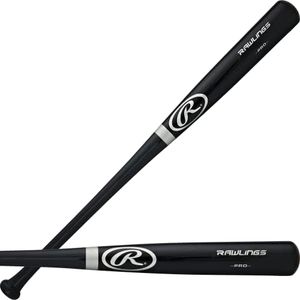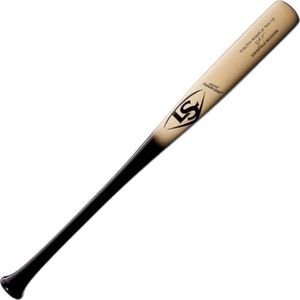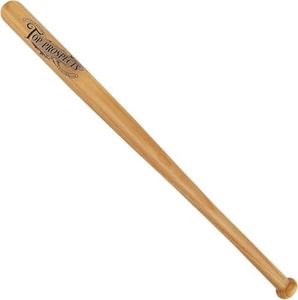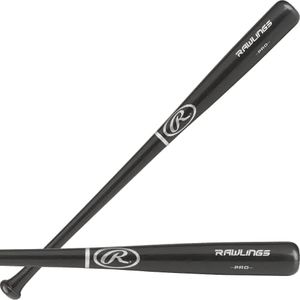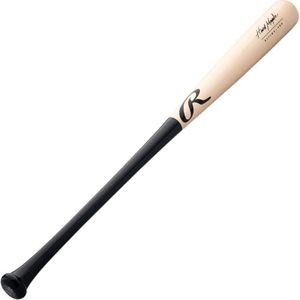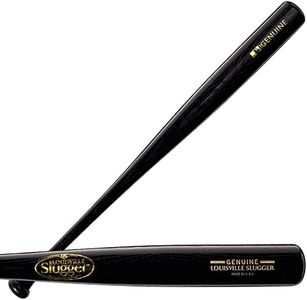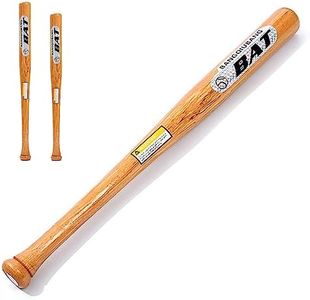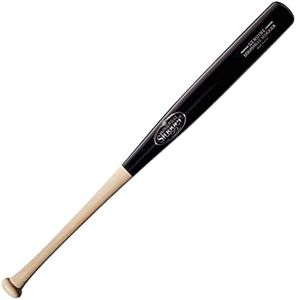We Use CookiesWe use cookies to enhance the security, performance,
functionality and for analytical and promotional activities. By continuing to browse this site you
are agreeing to our privacy policy
10 Best Youth Wood Bat
From leading brands and best sellers available on the web.Buying Guide for the Best Youth Wood Bat
Choosing the right youth wood bat is important for any young baseball player, as the right bat can greatly influence comfort, skill development, and enjoyment of the game. When shopping for a youth wood bat, it's key to focus on a few main features to make sure the bat matches the child’s size, strength, and playing style. Rather than being swayed by looks or brand, focus on the features that impact performance and safety.LengthBat length, usually measured in inches, refers to how long the bat is from end to end. This is important because a bat that’s too long or too short can affect swing control, speed, and comfort. Generally, shorter bats are easier to swing and control for younger and smaller players, while longer bats have a bigger reach but may be heavier and harder to control. To choose the right length, consider the player's height and weight; many charts are available comparing player size to recommended bat length. If the youth player struggles to hold or swing the bat comfortably, it's best to go with a shorter model.
Weight (and Drop Weight)Weight refers to how heavy the bat is, often tied to a measurement called ‘drop weight’ (the difference between the length and weight of the bat). Lighter bats are easier to swing quickly, which helps with control and technique, while heavier bats can allow for more powerful hits but may cause fatigue or slow down a young player's swing. For younger and smaller players, a lighter bat with a higher drop weight (larger negative number) is a good choice, while older or stronger kids may handle a heavier, lower drop weight bat. Choose a weight that the player can swing with speed and confidence without straining.
Barrel DiameterBarrel diameter is the thickness of the widest part of the bat. Most youth wood bats have a smaller barrel compared to adult bats. A smaller barrel is lighter and easier for younger kids to manage, while a slightly larger barrel can provide a bigger hitting area, making it easier to connect with the ball. However, a larger barrel can also mean extra weight. For younger beginners, a standard youth barrel is usually the safest bet. As players develop more skill and strength, they might opt for a slightly wider barrel for better performance.
Wood TypeYouth wood bats are usually made from types of wood like ash, maple, or birch. Each type offers different properties: ash is flexible and light, making it easier to handle; maple is harder and more durable, giving a solid feel; birch offers a balance between flexibility and hardness. There’s no universally best type—it depends on player preference. Beginners might prefer lighter ash for easier swings, while more advanced kids might choose maple for its power or birch for its balanced properties.
Handle ThicknessThe handle of the bat can be thick or thin. A thinner handle allows for better wrist control and faster swings, while a thicker handle absorbs more vibration and can reduce sting from missed hits. Youth players with smaller hands often find thinner handles easier to grip, but sensitive players or those worried about vibrations might appreciate a thicker handle. It’s best to have the player grip the bat to judge comfort.
Certification/League ApprovalDifferent leagues have rules about which bats can be used, often regulating dimensions and safety ratings. It’s important to make sure the bat you select is approved for your child's league. This information can often be found on the bat itself or its packaging. Always check with the coach or league organization's requirements before buying.
